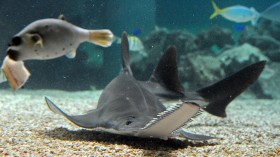Experts have developed an experimental computer program that can accurately identify bird songs from hundreds of various tweets and chirps. This could potentially bring them closer to identifying the use and differences of these chirps, information that could be usefully in understanding language among all animals.
Details of the program are presented in a recent issue of the peer-reviewed journal aptly named Peer J.
"If you go out in to a forest and want to know what you hear, there are hundreds of possible results. Now we are closer to having an app that can really let us do that," lead author Dan Stowel told BBC News.
According to the study, Stowel wanted to increase the accuracy of preexisting strategies for identifying and "decoding" bird songs not by adding more pre-programmed rules of identification, but by setting up the parameters for "machine learning."
Machine learning is quickly catching on in fields where complex data processing is essential. Instead of writing out strict rules for a program to follow, programmers instead write a very lose rule set, introducing a program to base data that it can elaborate on through its own experiences.
Nature World News previous featured several different ways various artificial intelligences and programs are using this today, but we certainly didn't consider decoding birdsong as a viable application.
Now, Stowel is doing just that.
"Given a set of recordings, each of them with a list of the bird species present, I was able to 'train' a computer system by showing it these labeled examples," he said.
According to Stowel, his program, which 'learns' from its efforts using a simple classification algorithm has proven more accurate at identifying various songs in field tests, compared to rigid acoustic measuring algorithms guided by a complex rule set.
"Birdsong is extremely complex. The simplest sounds are often the most difficult, because they can sound so alike," he explained.
It is difficult for rigid programs to overcome these similarities, but a program that learns from its experiences can more easily adjust for error.
According to the study, programs like this may one day not only help ecologists identify birds populations, but also aid linguist in understanding various songs.
A recent Nature World News article detailed how some experts believe that the songs of birds and singing apes hold the secrets to how the human language came to be, and Stowel believes that his work can help prove this to be true.
However, it will still be some time until the software has "learned" all it will need to know.
© 2024 NatureWorldNews.com All rights reserved. Do not reproduce without permission.
![Severe Thunderstorm Alert: Tornadoes, Damaging Winds and Hail Possible from Upper Ohio Valley to Northeast US [NWS]](https://1471793142.rsc.cdn77.org/data/thumbs/full/70161/280/157/50/40/severe-thunderstorm-alert-tornadoes-damaging-winds-and-hail-possible-from-upper-ohio-valley-to-northeast-us-nws.jpg)




